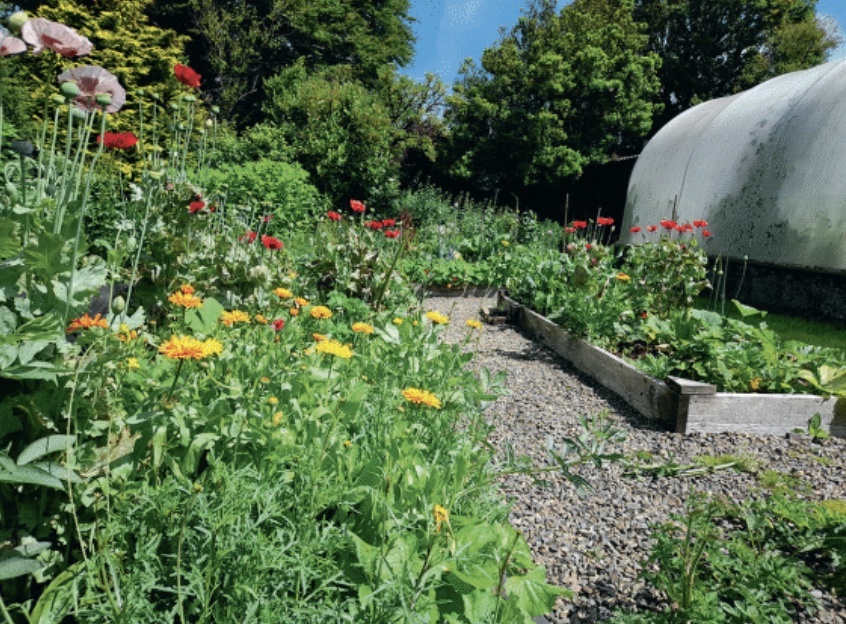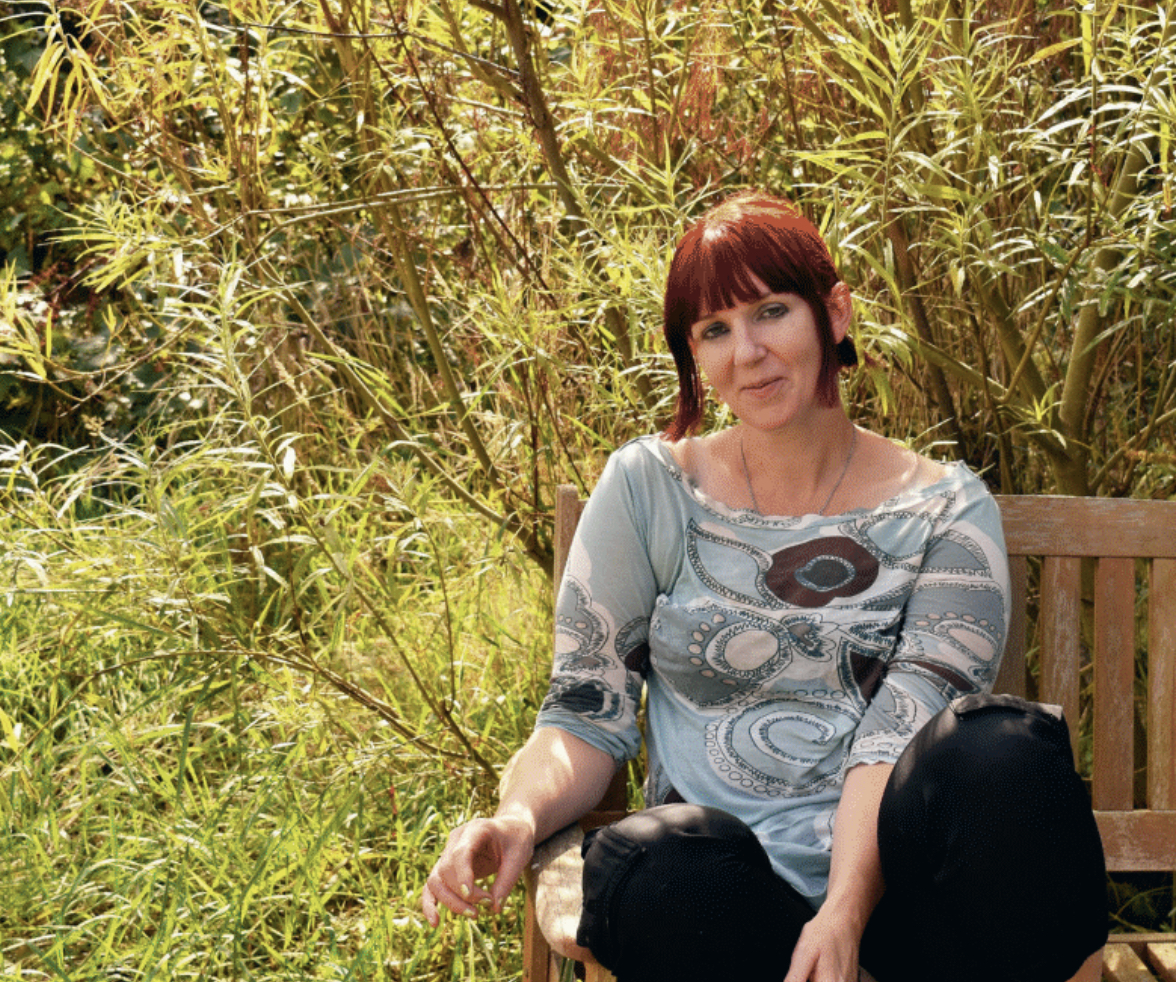In an extract from her new book, The Climate Change Resilient Vegetable Garden, Kim Stoddart explains why building confidence and resilience in yourself (and your garden) is key…
I’ve been a smallholder in the beautiful wild west of Wales for 14 years, and I have written for The Country Smallholder magazine for many of them, documenting my experiences of adventuring with low cost, more resilient ways of growing food. What started with my adventures attempting to garden entirely for free in The Guardian, has transformed into a mission to help gardeners everywhere become more resilient. I’m now editor of sister publication, Amateur Gardening magazine and it is a real pleasure to be back on these pages sharing with you some of the tips, tactics and tales from my latest book which aims to offer hope for the future as well as the on-the-ground savvy solutions to help us all cope with our changing climate.
We are living through unprecedented times as the long-predicted greater extremes of weather create more challenging on-the-ground growing conditions. This, combined with the recent pandemic, the rising cost of living, and many ongoing threats, mean that it’s harder and harder to feel completely okay right now, let alone to make the necessary adaptions to your outside space to shore up the weather defences.This is why gardening in a climate change–savvy way is as much about connection and resilience in the gardener as it is the actual vegetable garden itself. It’s about developing an innate, inner confidence and empowerment to think on your feet, to make decisions based around the weather at the given moment, and to break gardening rules if they require breaking.
It’s also about working with, and learning from, others, the individual growing conditions where you live, and the natural world at large. We are all in this together.

Kim in the garden
GET YOUR CONFIDENCE BACK
Time and time again, in the courses that I teach, I have gardeners of all levels of experience putting themselves and their abilities down. They talk about their failures rather than their successes, even when they’ve gardened for a very long time. Why is this? I believe that over the years, with our reliance on buying a lot of what we need and generally being told how we should (and shouldn’t) garden, our confidence has dwindled in many ways. Certainly this is true when compared to our much hardier foremothers and fathers, who were able to grow food before there were multiple online purchasing options at our disposal twenty-four seven. Back then, there weren’t so many tools, gadgets, and “must-have”items. There was no gold standard way of doing things. Tools were longer lasting because they had to be. People grew food in one form or another because they needed to eat. They were much simpler times in many ways.
Nowadays of course with globalisation and modern technology so interweaved with the very fabric of our day-to-day existence, anyone interested in gardening is bombarded with images of the picture-perfect vegetable garden. On social media, online, on television, only the best side of gardens are shown. It’s no wonder so many people feel that whatever they do is never quite good enough.
If you combine this false aesthetic with the over complication of the gardening process itself —more work to keep nature in check, and less time to work with it and play — then it’s understandable. No wonder so many people feel like failures in light of the the rather fake image that has been projected of what gardens should look and be like.

Kim has designed her garden with natural resilience and soil protection at the centre of it
MITIGATING THE RISK OF STRONG WINDS
As with water, you want to slow the flow of strong winds as much as you can to reduce the damage risk. Wind can cause irreparable damage to plants, trees, and shrubs that you have growing, not to mention homes and other structures. Solid fences are problematic as wind barriers because wind can bounce off full force.
Try these options for reducing the strength of wind gusts:
Natural hedging
This is an effective first line of defence against wind. To maximise harvests from your vegetable garden while also reducing your wind damage risk, why not create an edible barrier with the likes of soft fruit bushes, crab apples, wild cherry trees, or any number of native shrubs and small trees? Place this natural hedging along the side of the garden from which heavy winds usually arrive.
Natural fencing
Materials such as willow and hazel can be used to create resilient hedging or windbreaks within your garden. You also can make a wildlife hedge out of old branches and clippings from your garden. Create a layered effect. Think layers within layers to afford further protection. For example, I employ a mix of layers of hedging, wildlife hedging, willow, soft fruit bushes, and trees to slow the flow. This is a great all-purpose wind protection for my vegetable garden and polytunnels, and it also works well to raise the temperature slightly on cooler days and provide cool, partial shade on very hot days.
MITIGATING DROUGHT RISK
What if there is a heat wave and ban or restriction on water use?
Extreme experience — gardening with very little summer water: My smallholding relies on a private water supply (a well), and for the last few years, the supply has been dipping more and more each summer, running almost entirely dry for months at a time with a mere ten gallons a day coming in, which isn’t enough to supply a home, let alone a garden. A summer water-use ban would be a good comparison to so little water being available on tap. Yet, this experience has been incredibly useful because it has enabled me to further test the techniques I use to a whole new level of dryness. For a few summers running, I hardly watered the plants in the ground in my polytunnels, vegetable garden, and large raised beds for weeks on end. during a drought and was amazed at how well the majority of my plants fared. Seedlings in small pots were watered because they are much more vulnerable, but the vegetables in the ground had to tough it out. There are many reasons why they did so well.
Healthy, robust soil with natural ecosystems supporting plants from below, my free-planting system, and use of ground cover to protect soil from the sun are a few of those reasons. Also, I let plants trail and grow wild to further afford natural protection. And when I did water, I ensured it went deep into the soil and I mulched well. The trailing plants also became a natural mulch in themselves. Although I’m not suggesting you need to water quite so little as I did, I offer this example to show how resilient plants and gardens can be, to show that it is going to be okay. There are solutions — and low-maintenance ones at that. Climate change–savvy gardening also is very much about adaptation to the challenges at hand. In my case, I have further widened my rainwater capturing systems as a result. You can never have too many vessels for water capture. I am also backing up the private water supply for the home with alternative supplies to keep us from running quite so low again. There’s nothing like turning on the tap and finding it’s completely dry to bring the reality of our changing climate robustly to the forefront of your mind.

Kim pictured in front of the swale at the back of her garden
TRIED AND TESTED
My own climate change training gardens on my smallholding are in a very exposed location, more than 700 feet (213m) above sea level. They have been subject to strong winds, flooding, and near complete drought as the water supply from my well runs drier each year. These conditions have enabled me to test out a lot of techniques in rather extreme conditions and to experiment with often simple-to-implement methods to boost all-weather results naturally.
Important considerations for vegetable garden adaptation and design
Work to your risk, and experiment to see what is most useful and effective in your garden space.
Mitigating flood risks
Water will always try to find the path of least resistance. Because of this, your system of defence should be based around the central permaculture principle of “slow it, spread it,sink it.” How that can look on the ground includes the following resilience-boosting methods, which will enable your garden to process much more water than it would be able to handle otherwise.
Rainwater harvesting during heavy rain
If many neighbours collect water in their outside space, it will help stem the build up of rainwater runoff. A single open trash can or bucket placed outside can help. The collected water can then be used to irrigate the garden, or at the very least, released when the risk of flooding has passed.
Use permeable surfaces
The trouble with hard surface areas, such as concrete and asphalt, is they don’t allow water to percolate away. This causes issues because it means that water movement can then build up and up, to untamed levels that can cause flood risk as street drains struggle to cope with the large excess of water. Consider instead permeable design with materials that enable water to readily drain, sink, or flow away.
Increase perennial planting
From trees, hedges, and shrubs to no-dig gardening practices, the presence of more plants in your community is rich with opportunity for long-term solutions.
Work with wet areas
Rather than trying to fight nature all the time and control it, work with what you have.This is why wetlands exist naturally to act as a protective habitat that prevents flooding further down the line. If an area in your community is prone to being soggy, why not create a wildlife pond there with a rain garden and water-friendly plants growing around?
Swales and bioswales
These manmade depressions or channels in the earth have been used around the world in flood-prone areas for a long time because they act as a useful first line of flood defence alongside other measures. I have a bioswale at the back of my training gardens.
This article originally appeared in the June 2024 edition of The Country Smallholder. To receive regular copies of the magazine featuring more articles like this, subscribe here.
For FREE updates from the world of smallholding, sign up for The Country Smallholder newsletter here.








